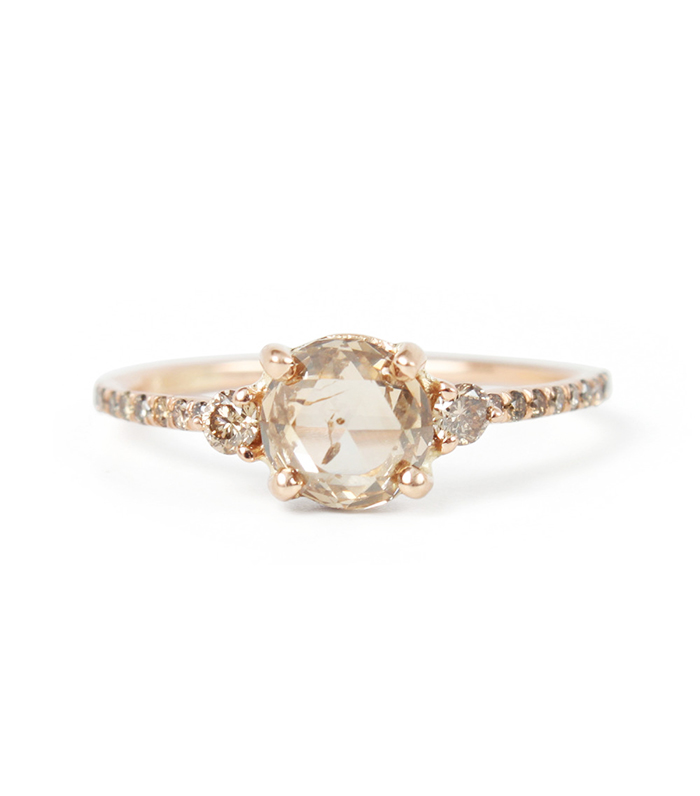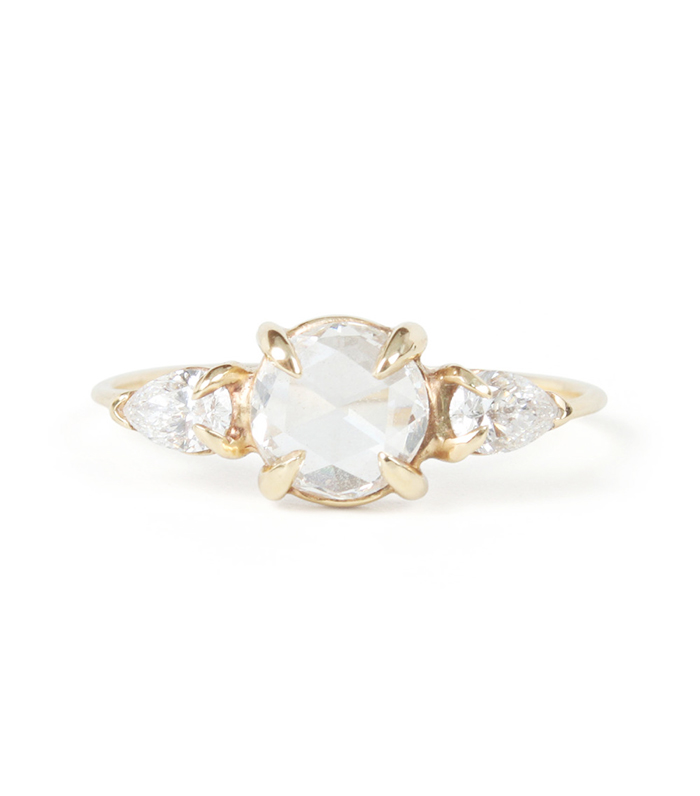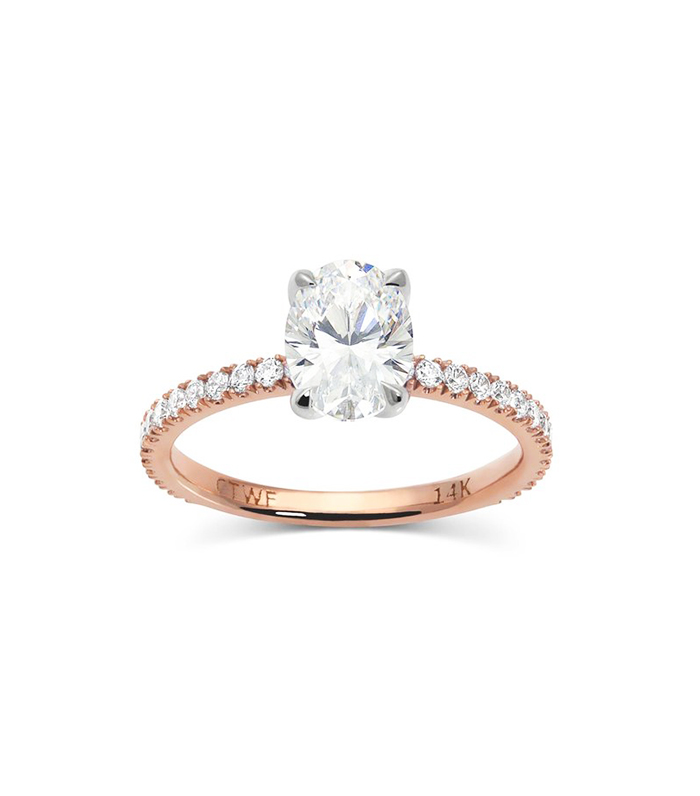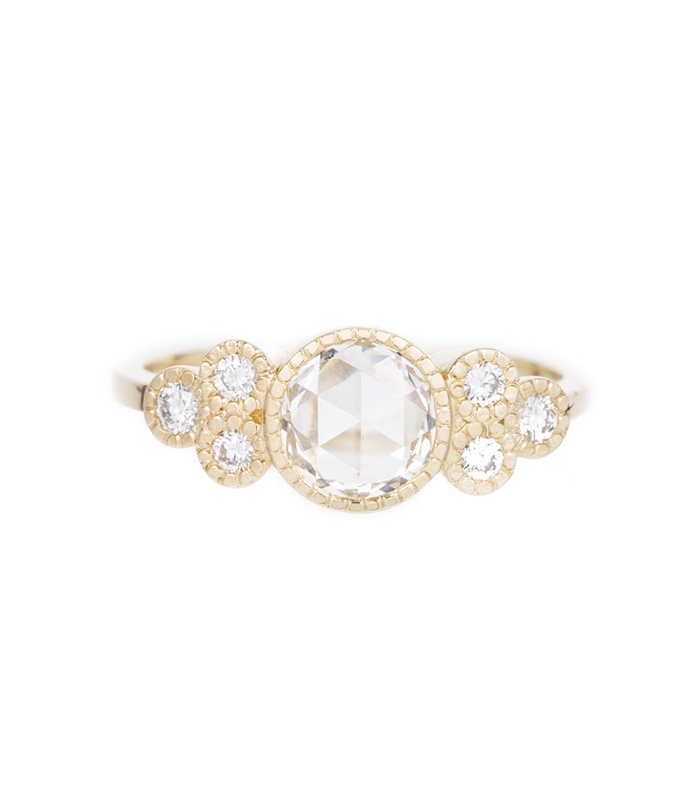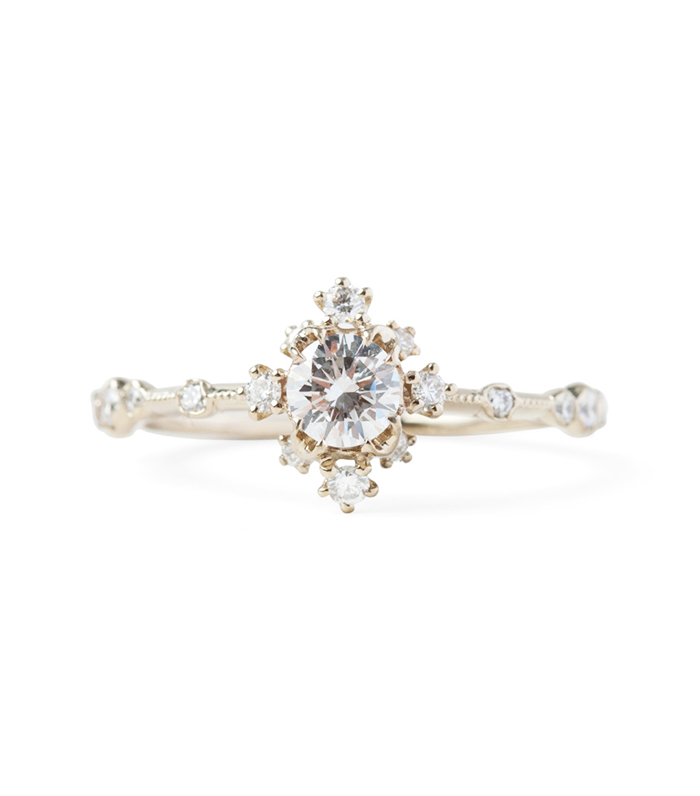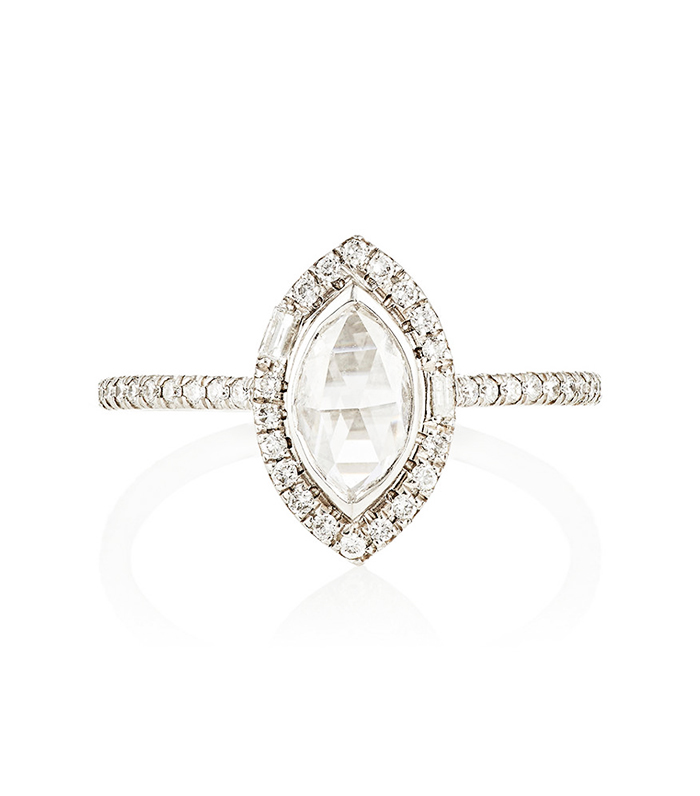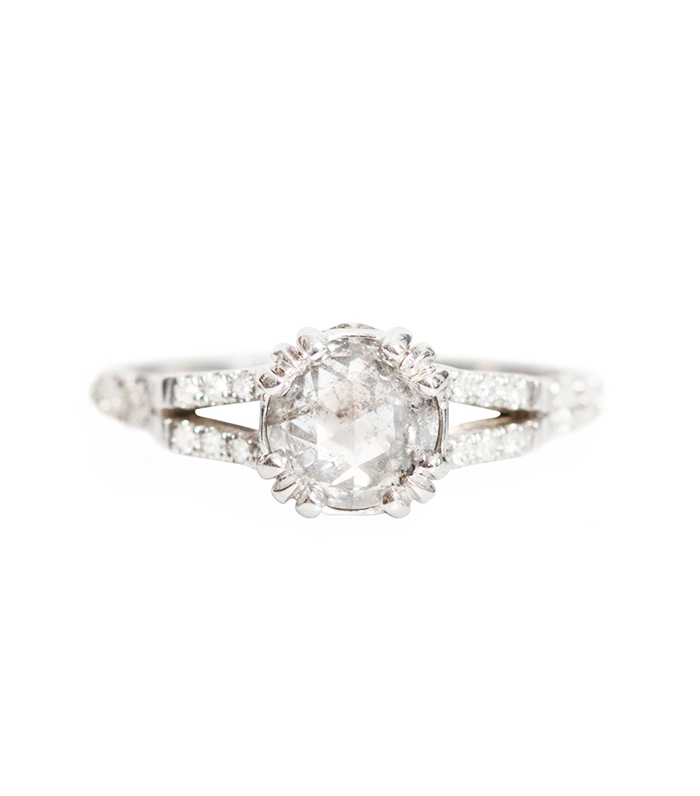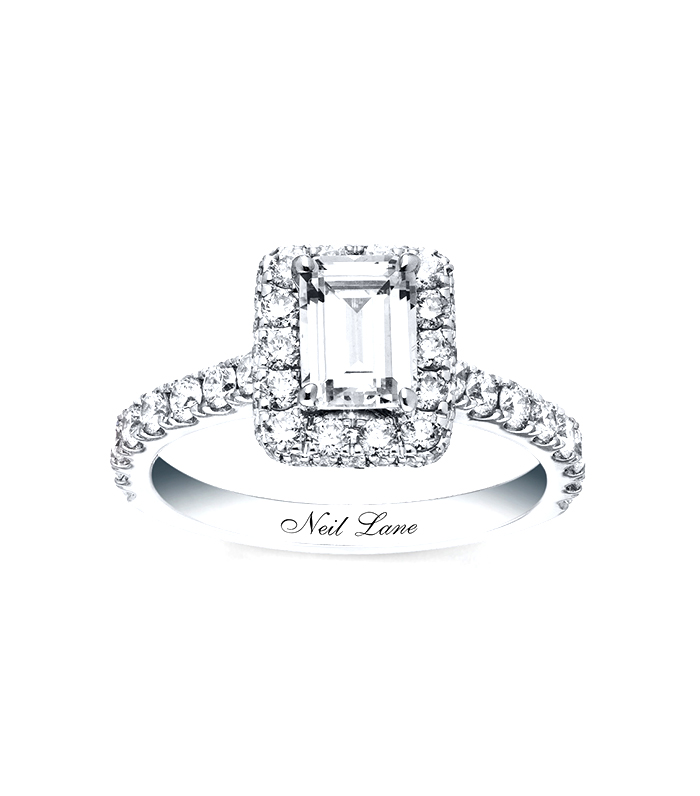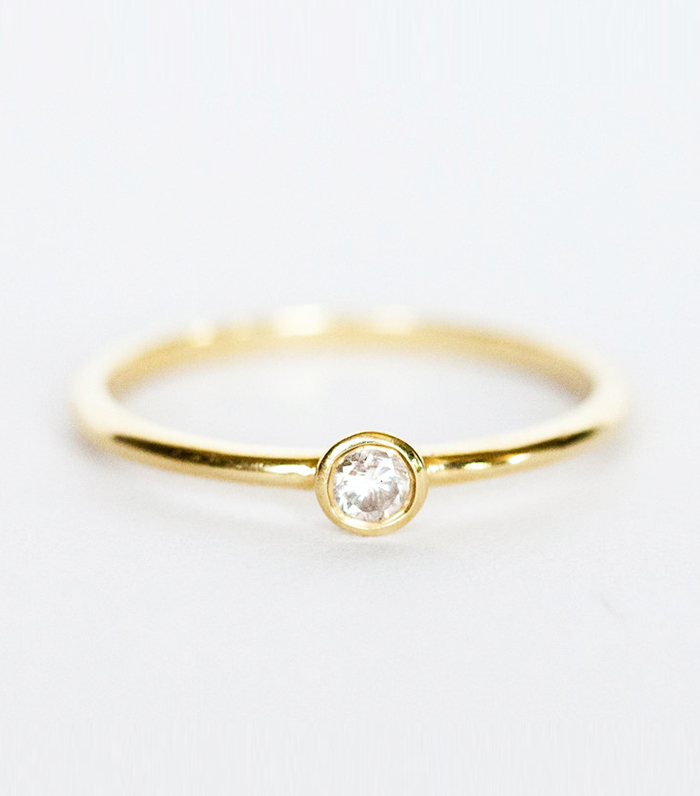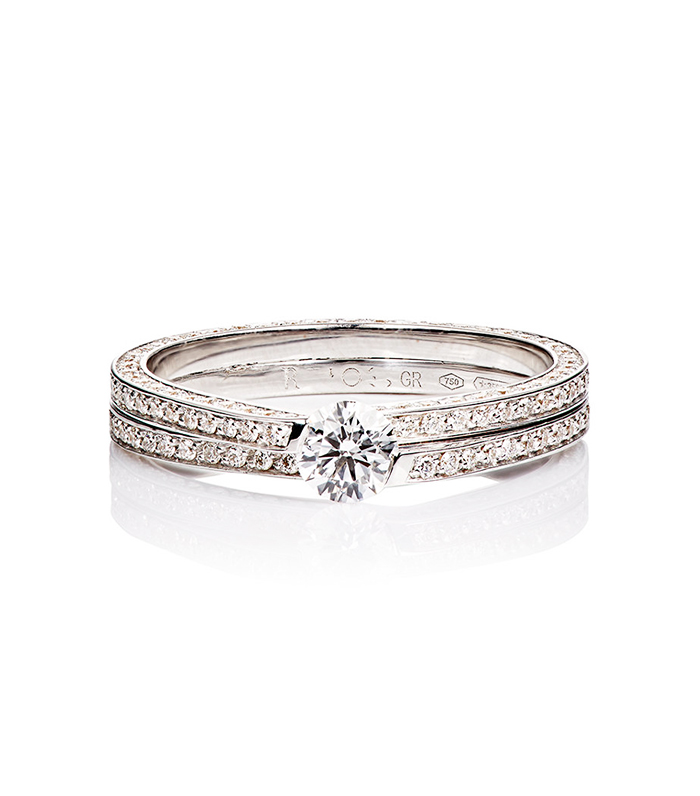Truth: Custom Engagement Rings Can Actually Save You Money
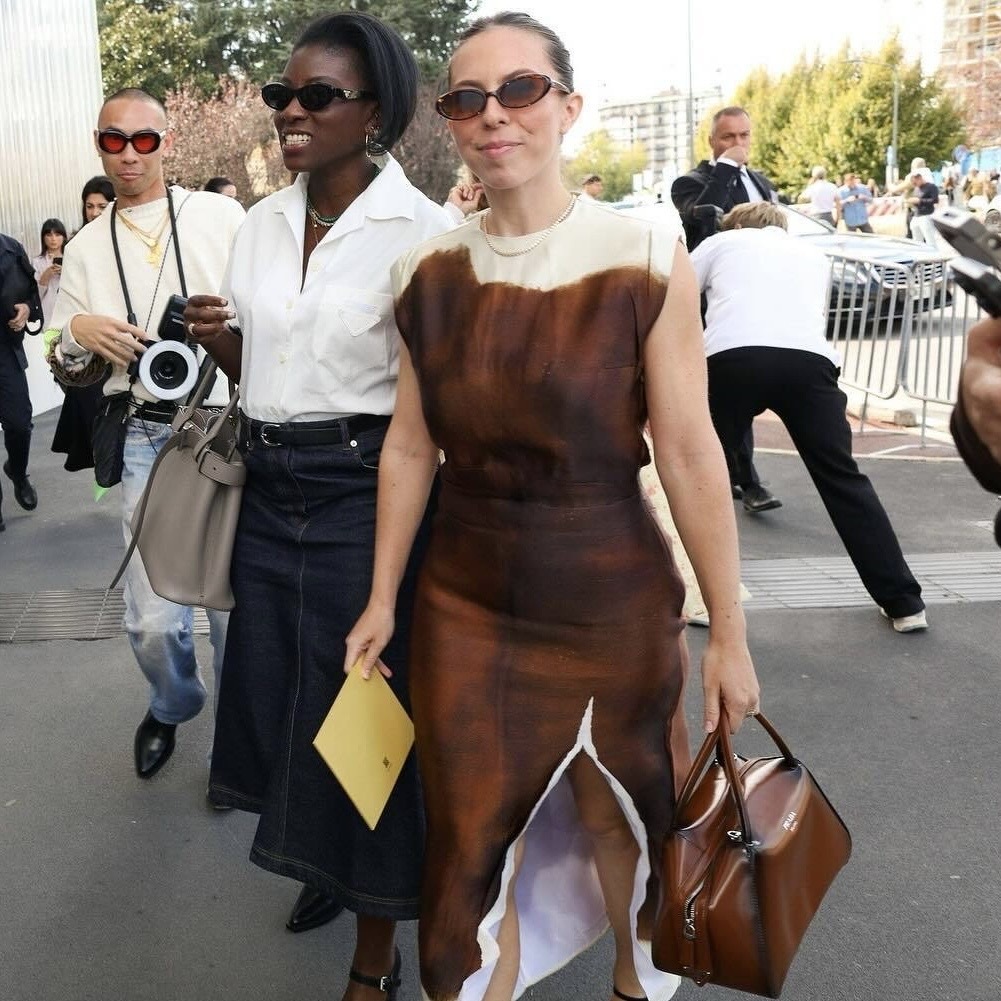
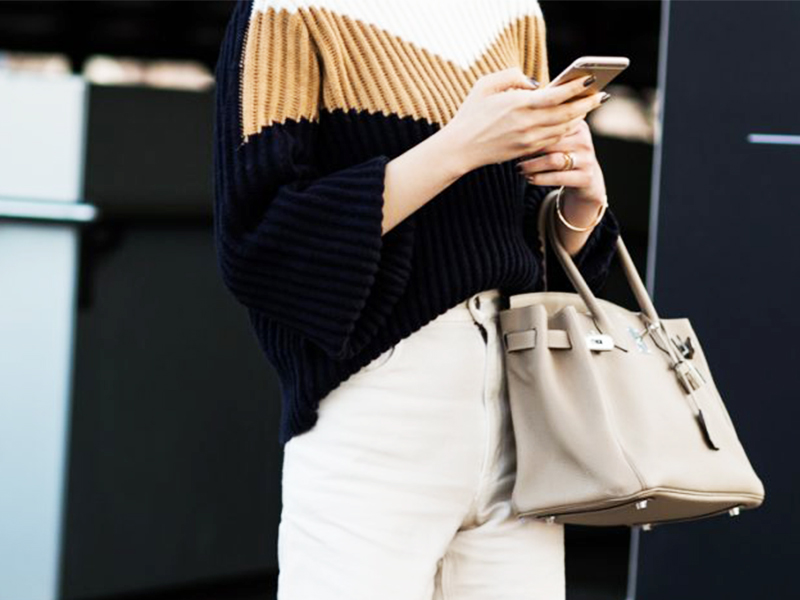
Custom engagement rings… Don't you have to basically be a millionaire to get one of those? And even if I were a millionaire, I would have absolutely no idea what I'd want, which totally defeats the purpose—right?
Wrong, but we know those are the thoughts that run through your mind when you hear the words "custom engagement ring," and we don't blame you. When it comes to the process of customization, especially as it deals with one of the most important pieces of jewelry you'll ever own, there's definitely a lot of nervousness and questioning involved. In an effort to put all the myths (and outright lies) to rest, jewelry designer Octavia Zamagias of Octavia Elizabeth jewelry told us the truth behind all that goes into customizing an engagement ring.
Currently living in Los Angeles, Octavia is definitely one to watch when it comes to the world of fine jewelry. After studying at both the London School of Jewelry and the New Approach School, this young designer has had quite the remarkable start, including celebrity approval from Jessica Alba and a recently launched curation of pieces on Moda Operandi. Beyond her incredible knack for designing and creating some of the most stunning custom engagement rings on the market, Octavia Elizabeth offers every dainty fine jewelry item your heart could desire, ranging from stackable rings to ear huggies. But we know the real reason you're here is to find out what actually goes into creating a one-of-a-kind ring, so we'll let the informational words of the designer herself take it away.
Go on to find out the truth behind customizing an engagement ring as told by Octavia Zamagias, in addition to shopping some of our favorite engagement rings available now.
LIE #1: You have to be a millionaire to afford a custom engagement ring.
"While some designers do have a minimum spend, many don't. I have worked with budgets as small as $1500 and as large as $85,000. The bulk of your budget should go to the center stone. Diamonds are all priced per carat. Also, the prices are dependent on the quality of the stone."
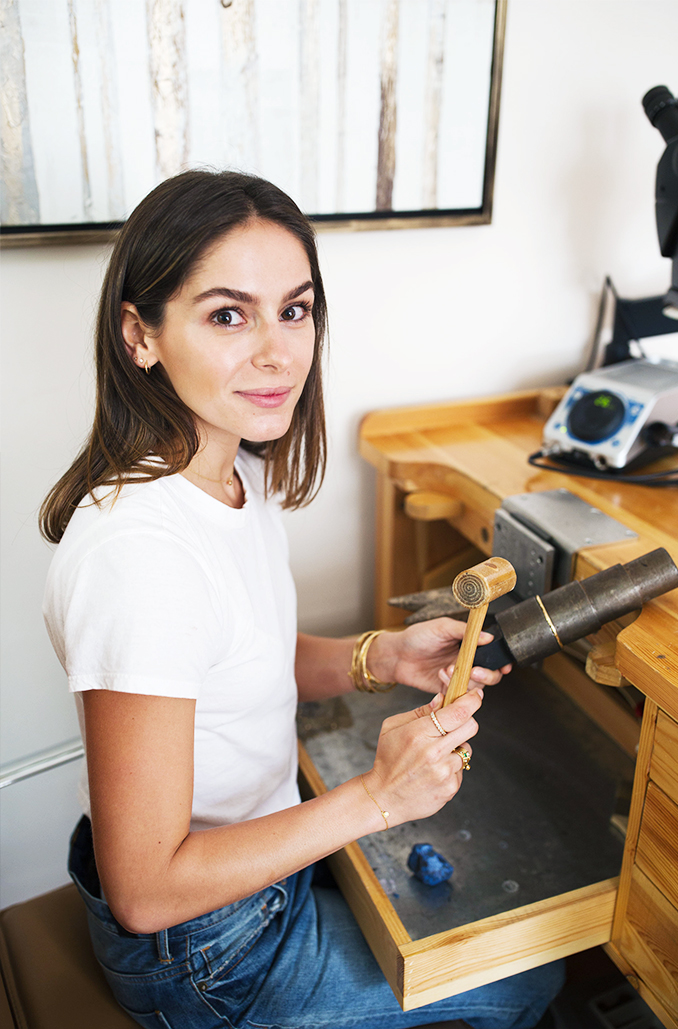
LIE #2: Customizing your ring means you get a smaller stone for your money.
"Custom rings can actually mean you get a bigger stone for your money. If you work with a talented jeweler or gemologist, they will work hard to find you an amazing stone at a great price. Many clients come in saying they only want VS1 or VS2, but often I am able to find them great SI1 or SI2 stones that save them money. A lot of money."
PRO TIP: "Carat weight of a diamond is truly the weight of the stone when weighed on a special scale. Some people can get really hung up on carat size, meaning they say they don't want to look at anything below a 1 or 2 carats—don't do this! Stones are all unique, and oftentimes you can get a diamond that has a larger face in millimeters that has a smaller carat weight."
PRO TIP: "Important! Only buy a stone with a GIA certification. What does GIA mean? The Gemological Institute of America, or GIA, is a nonprofit institute dedicated to research and education in the field of gemology. The organization offers diamond and other precious stone gradings in order to protect both buyers and sellers. Their grading service evaluates each stone based on Four C’s: cut, clarity, color, and carat weight."
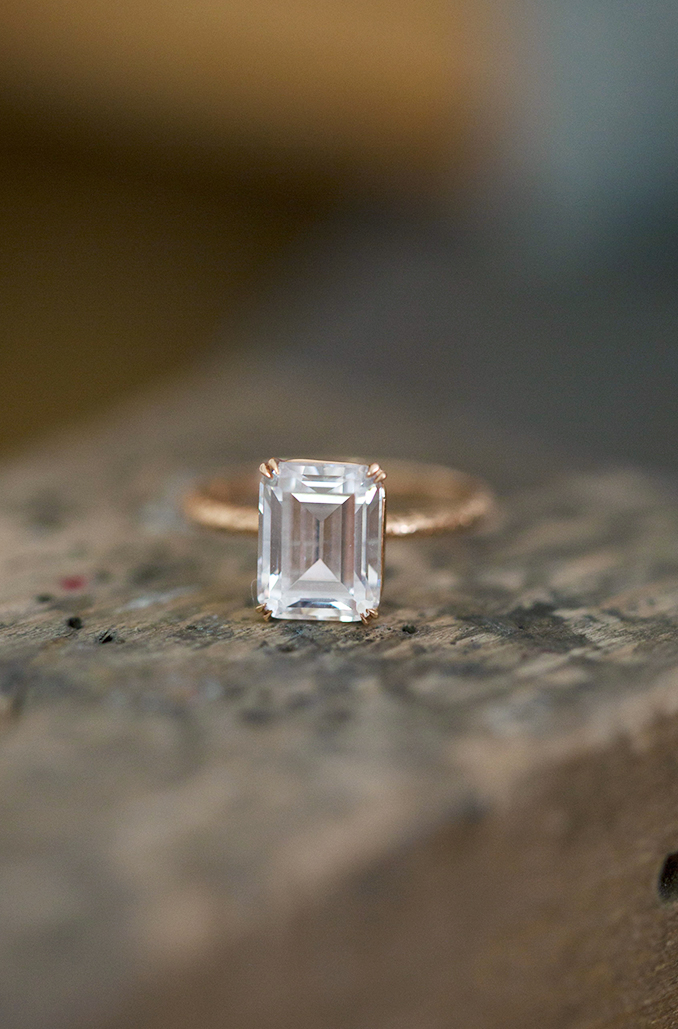
LIE #3: You have to know exactly what you want.
"Not sure what you want? No problem. We can start as basic as what stone shape will be most flattering on the finger and go from there. Other things to consider are the color of gold, the purity of the gold, and, of course, the style of the ring. When doing custom rings, you can be so intentional with everything—it's amazing—from the thickness or thinness of the ring to whether you want a single claw prong or double claw prong."
PRO TIP: "Don't get overwhelmed! Fingers crossed, you'll only do this once, and the process is supposed to be fun! If you are going alone to design and buy the ring—i.e., doing this without the input of your (soon-to-be) fiancé or fiancée, use your resources! Bring along his or her best friend, sister, or mother. Look through currently owned jewelry now and take photos (it doesn't even need to be rings that you are looking at—in general people usually gravitate toward certain styles and a good designer should be able to pull from what you show them). Just make sure it is items the person actually wears and likes and not the pieces forgotten about in the bottom of a jewelry box!
"Also, if you have spoken about the ring with your fiancée or fiancé, write down what is said. A lot of times very specific things are said, and the partner can't remember!"
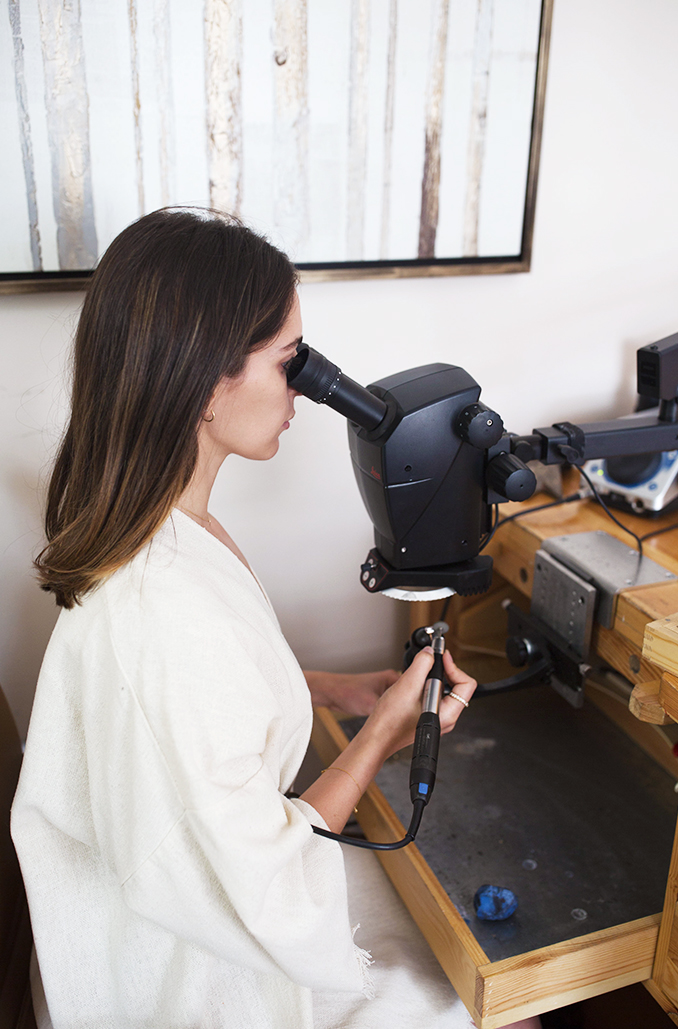
LIE #4: If you meet with the designer, you have to buy.
"Having a meeting doesn't mean you need to buy, and it doesn't mean you have to fully be 100% on the design concept on the first meeting! Customizing a ring can take time. Most people are confident after the first meeting, but it can take longer. Also, don't think its a one-stop trust fall! You can be as a part of the steps in making a custom ring as you'd like to be. Some people meet with me once, give the budget, confirm the design, and put the rest into my hands. However, for most, we meet once to design the ring and go over budget, then again when I have the stones to choose from they come in to choose. Some people do need more time and more meetings—that's okay. You should be confident and happy in the end product. Don't feel rushed."
PRO TIP: "Custom engagements rings take a minimum of two weeks (that's a rush order for someone who knows what they want)—allow yourself and the jeweler time to create the piece."
LIE #5: Custom rings aren't for people who want a simple style.
"I can't tell you the resources that jewelers have as wholesalers. We have access to databases and warehouses full of ring molds and ring shanks or heads that you can literally order online and set with a diamond. I am not saying this is wrong by any means—for one, the designs have been tried-and-true for decades, but it also means that you aren’t getting the most unique ring.
"Even if your partner wants the most classic and simple ring, custom is the way to go! You can slightly alter the shank of the ring to be the most flattering to your partner's finger, adjust the prongs so that they're more feminine or masculine, and even change the shank to be more modern and current. I can't tell you how many clients I have had who wanted a simple round-cut solitaire on a platinum shank—where the custom comes in is making the shank and prongs specific to the person getting engaged. Delicate and dainty versus architectural and pronounced—all are options in custom rings!"
Below, check out a handful of the rings Octavia has recently customized, in addition to rings we are loving now.
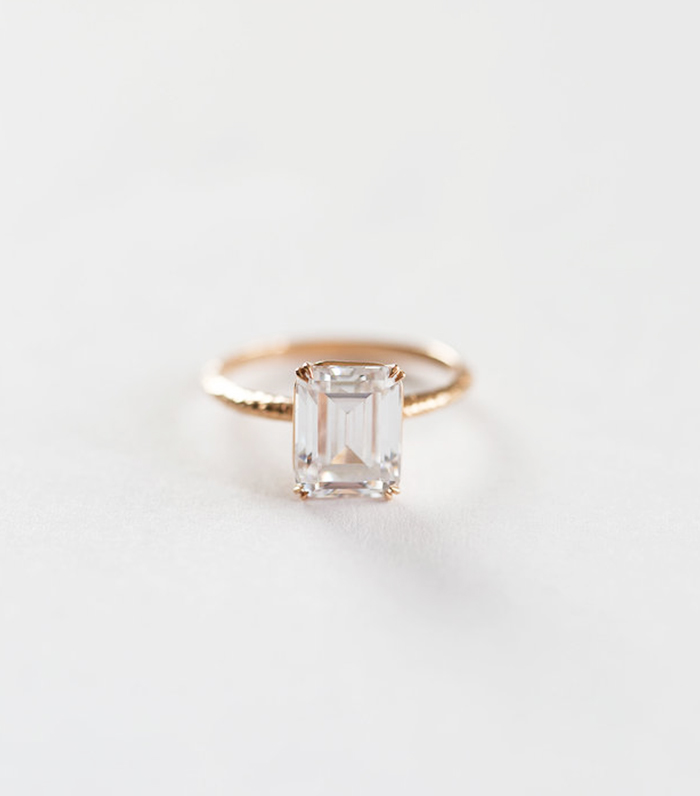
Pictured: Octavia Elizabeth signature solitaire engagement ring: 2-carat F VS2 step-cut emerald in a hammered 18K rose-gold band with double claw prongs ($3800 and up for 1/2 carat)
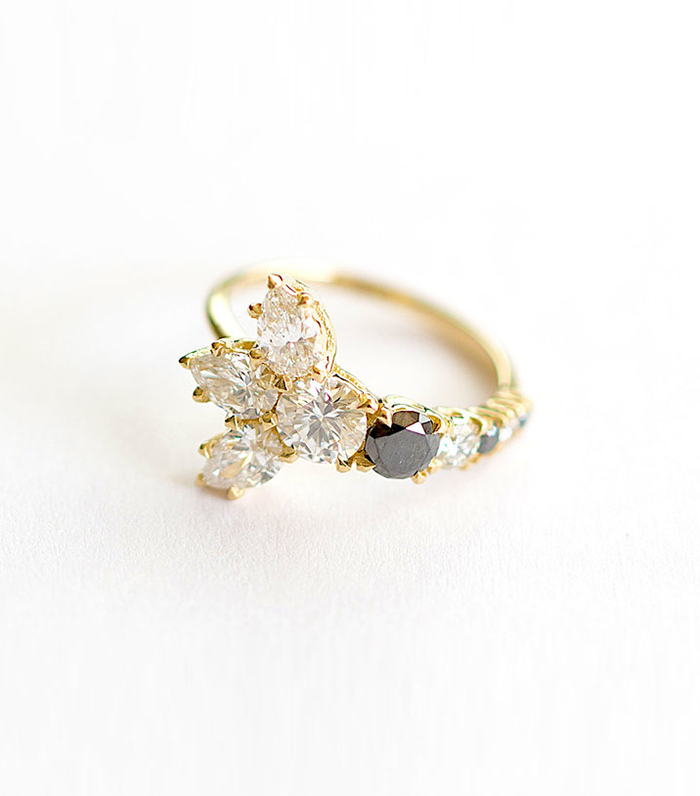
Pictured: Octavia Elizabeth black and white diamond engagement ring: 1 1/2 carats of recycled black and white diamonds in a 18K yellow-gold hand-fabricated setting ($3000 and up for 1/2 carat)
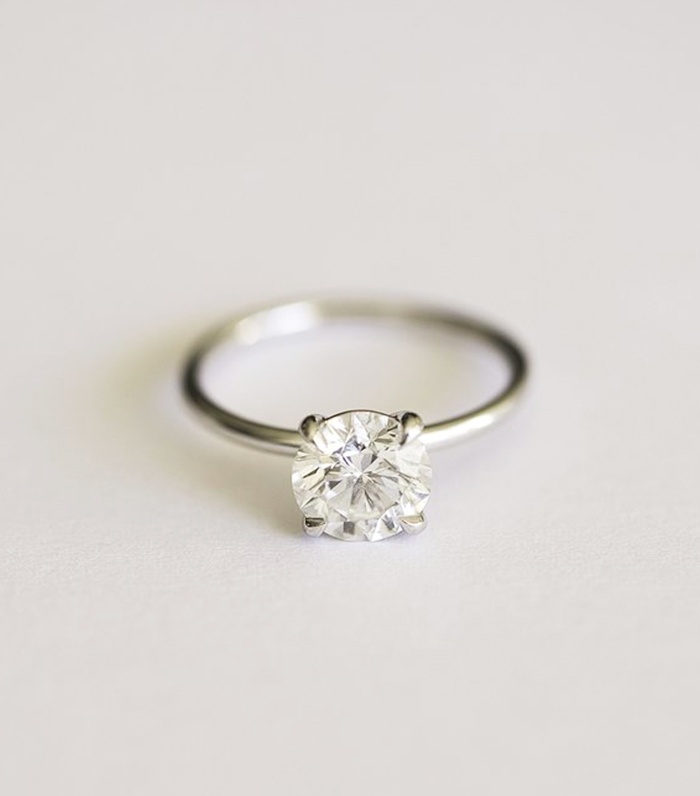
Pictured: Octavia Elizabeth solitaire engagement ring: 1 3/4–carat round-faceted SI1 I diamond in a platinum band ($3500 and up for 1/2 carat)
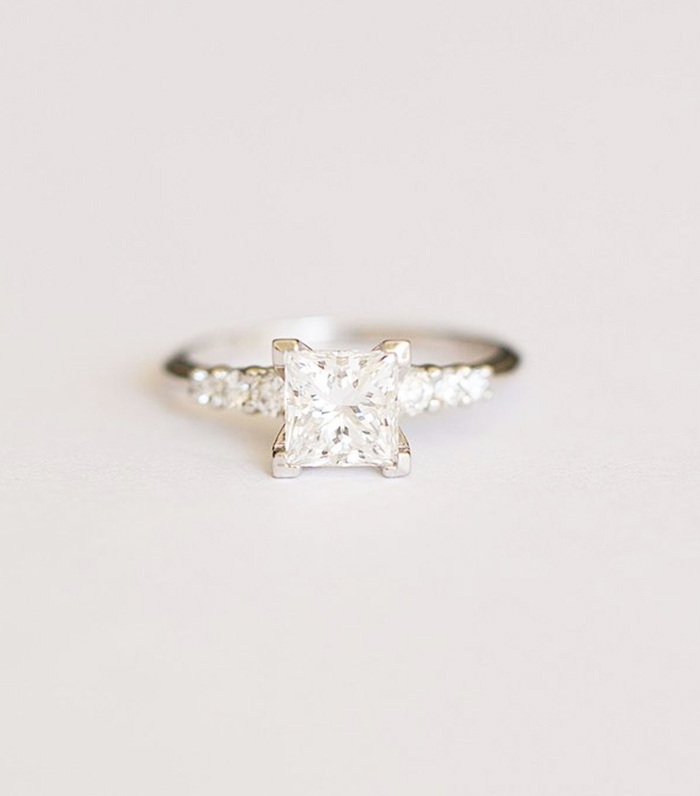
Pictured: Octavia Elizabeth custom engagement ring
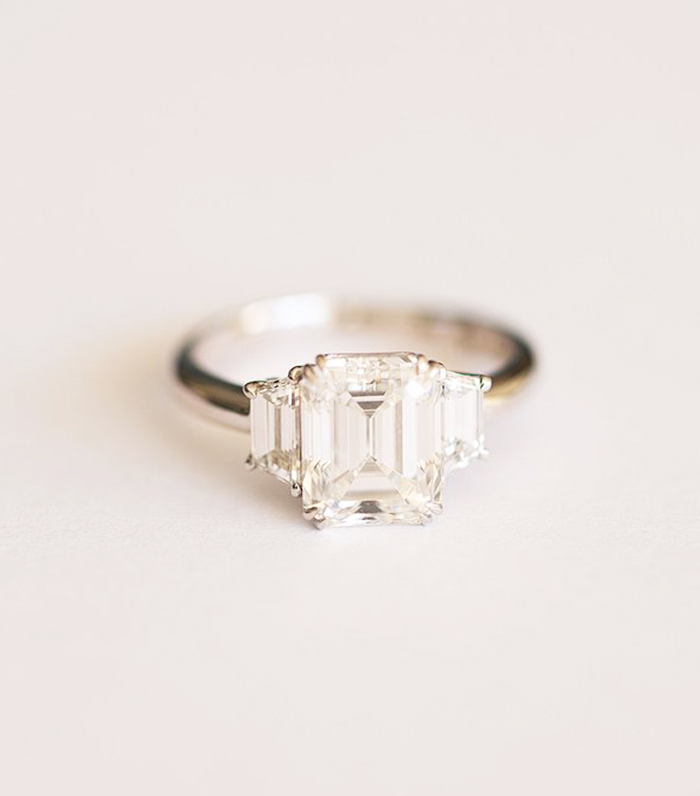
Pictured: Octavia Elizabeth three-stone engagement ring totaling 3 3/4 carats of VS1 F diamonds with two custom-cut trapezoid side stones ($4000 and up for 1/2 carat)
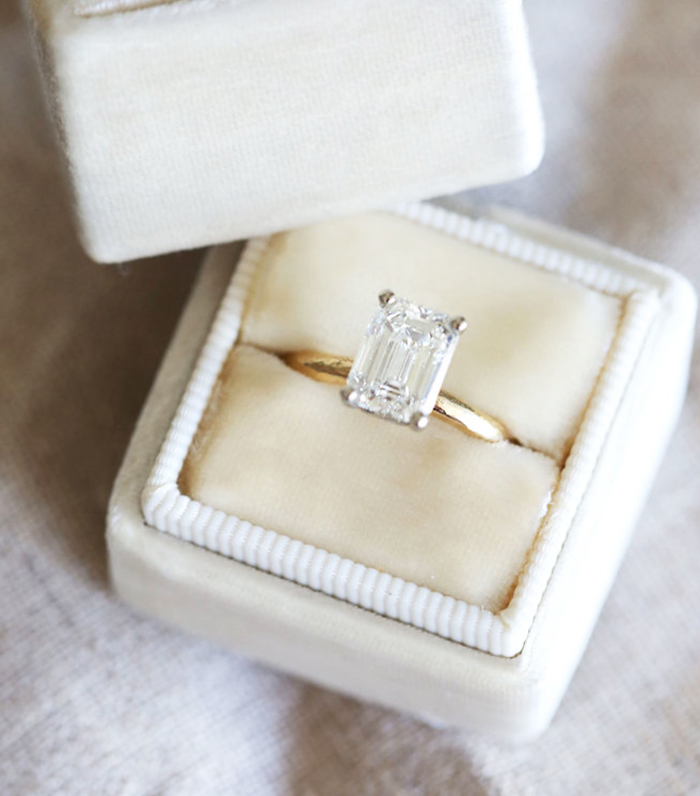
Pictured: Octavia Elizabeth signature solitaire engagement ring: 2-carat G VS2 step-cut diamond emerald in a hammered 18K yellow-gold band ($3800 and up for 1/2 carat)
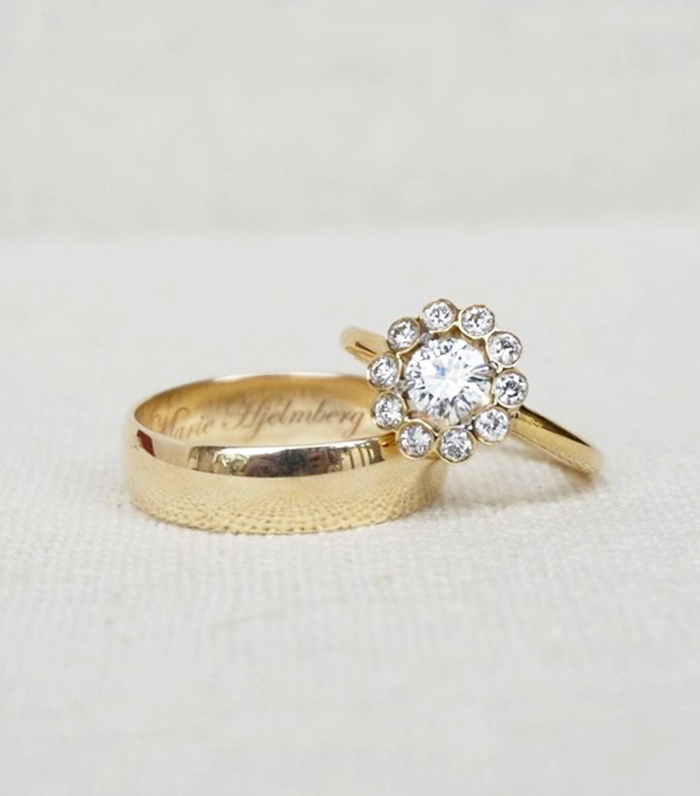
Pictured: Octavia Elizabeth custom engagement ring with a total of 3/4 carat G VS2 round-faceted diamonds ($3800 and up for 1/2 carat)
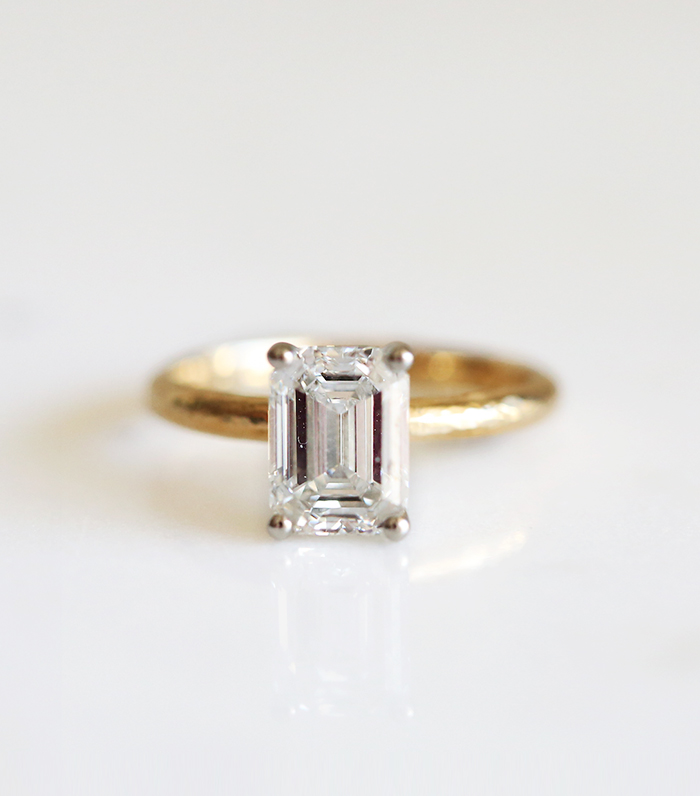
Pictured: Octavia Elizabeth custom engagement ring
Shop more engagement rings:
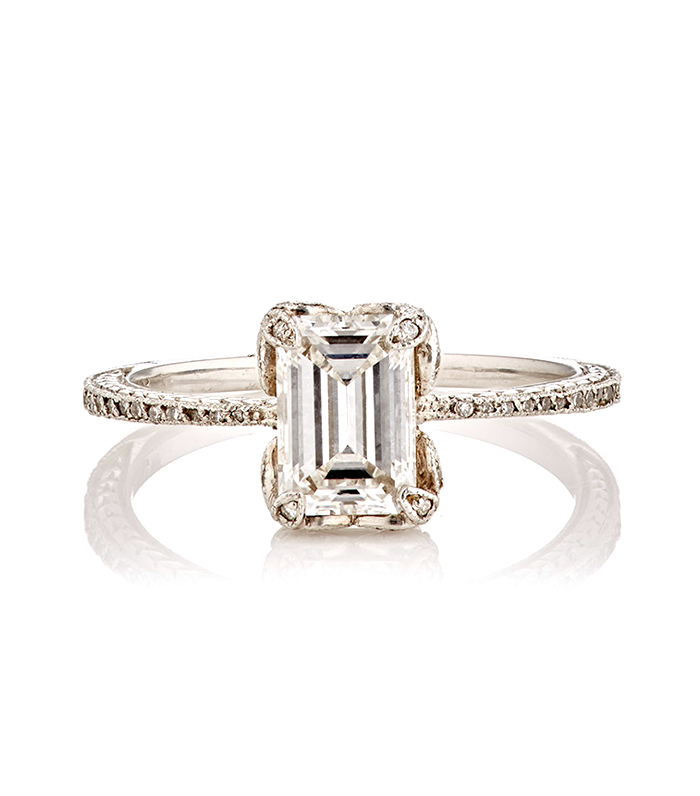
Cathy Waterman Flower Corner Ring ($32,500)
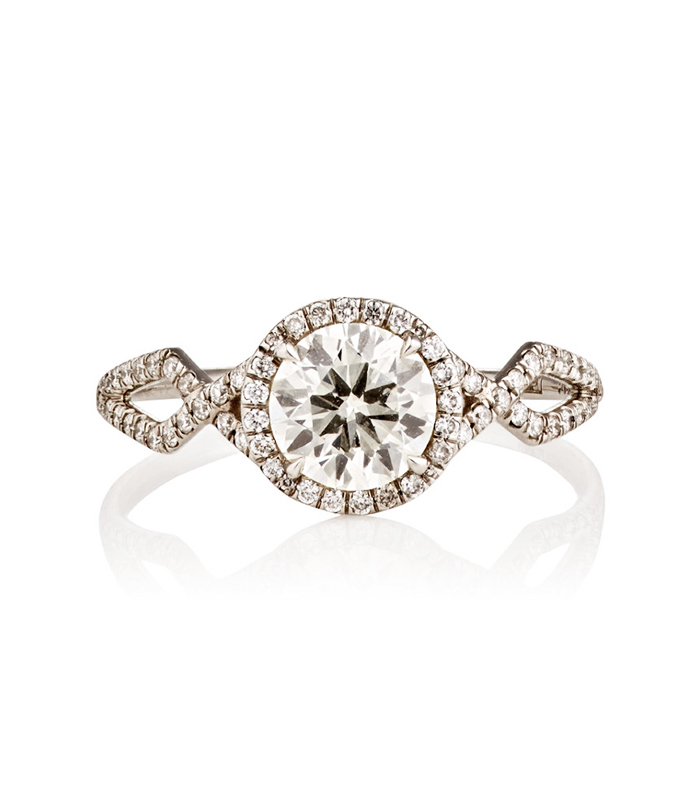
Monique Pean Mineraux Brilliant-Cut White Diamond Ring ($26,340)
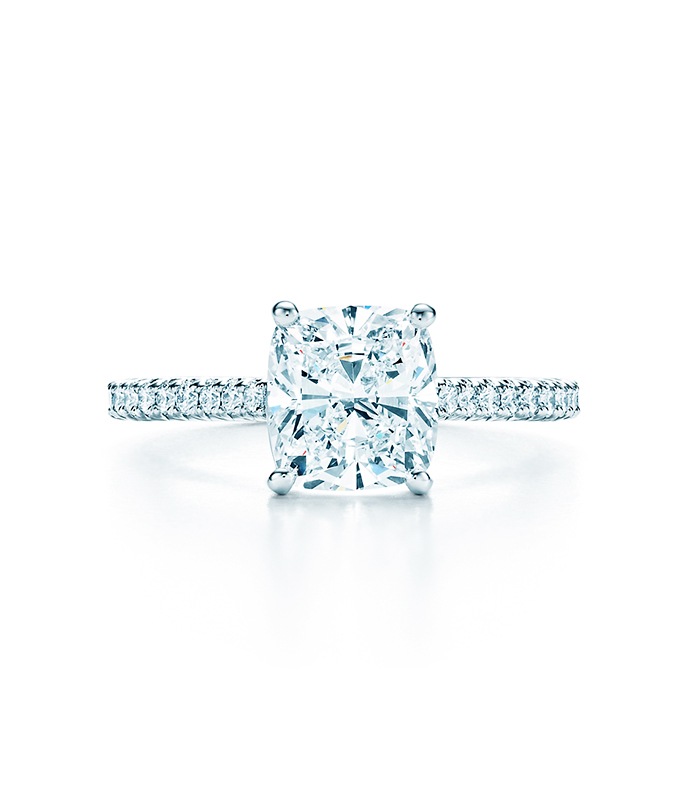
Tiffany & Co. Tiffany Novo ($39,200)What are your thoughts on custom engagement rings? Let us know in the comments below!

Lauren Eggertsen is currently the editorial director of Who What Wear and has worked at the company for over nine years, where she started as an associate editor and has since worked her way up. Lauren has worked in the Los Angeles and New York Who What Wear offices but currently calls L.A. home. Here, she leads and manages Who What Wear's editorial team and oversees all editorial content. Lauren's role also includes helping to set the fashion direction for all original photo shoots and often styles many celebrity cover shoots, including big names like Kaia Gerber, Normani, and Sabrina Carpenter. She has also attended multiple fashion weeks, including New York, London, Milan, and Paris, where her style has been featured on sites such as Vogue, Harpers Bazaar, and Elle.
